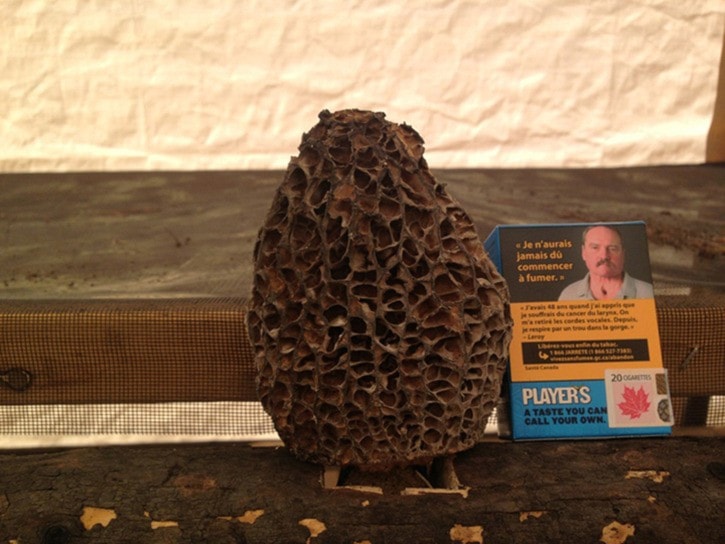Forests that are recovering from recent wildfires become the perfect spots for mushroom pickers.
In the summer of 2014, the Chelaslie River fire - located approximately seven kilometres south of the Chelaslie River - burned over 130,000 hectares. The area is now attracting harvesters from all over the country.
According to Mike Robertson, Senior Policy Advisor for Cheslatta Carrier Nation, there are approximately 300 pickers in the Chelaslie Arm area, including many pickers from Quebec.
Many commercial harvesters (pickers) are nomadic in their patterns of following the natural supply of mushrooms. Pickers may travel to the Yukon, Northwest Territories or Northern Saskatchewan to pick morels. In late fall to early winter, pickers travel south to Washington, Oregon and Northern California for available mushrooms.
Although no reliable data on income derived from mushroom harvesting exist, the provincial government believes commercial harvesting of wild edible mushrooms is a growing multi-million-dollar industry in British Columbia.
On a good day of harvesting mushrooms, a picker may earn several hundred dollars. According to Robertson, some pickers have reported a regular take of 100 plus pounds a day.
The price for any one species of mushroom may vary significantly across the province, but it could reach $8.50 per pound.
“At $8.50 per pound, that’s a damn good payday.”
Robertson said some pickers take this activity very seriously.
“One local individual went in there [in the forest] while snow was still on the ground; he built a raft to cross Ootsa Lake, transported his quad and materials and set up his own camp and drying station.”
Pickers sell their mushrooms directly to buyers at mobile buying stations or established mushroom depots. But it’s not only pickers that benefit financially from this activity.
“There is a huge cash economy on the mushroom grounds so some people are involved by selling bannock dogs, water, groceries, gas, bug dope, bread, bologna and rolling papers,” said Robertson.
The vast majority of commercially harvested wild edible mushrooms are exported to either Europe or Japan. The primary markets for chanterelles, boletes and morels are countries such as Germany, France and Italy, where they are traditional foods. The pine mushroom, also known as matsutake, is exported almost exclusively to Japan, where it is highly regarded.
Mushroom picking near the Cheslalie River is still not over and could extend for quite some time, said Robertson.
The Burns Lake RCMP continues to warn the public that the Chelaslie River is a remote area, and people should take precautions when making a trip out there.
“Anyone planning on visiting the area should be well prepared for outdoor survival, for wildlife they may encounter, and they should understand that they are a significant distance from any emergency services," said Terry Gillespie with the Burns Lake RCMP.
During the last week of May, the RCMP responded to two reports of serious aggravated assault and one head on collision near the Chelaslie River, where hundreds of people were picking mushrooms.
Since the two assaults and head on collision, there haven’t been any incidents reported in the area.
